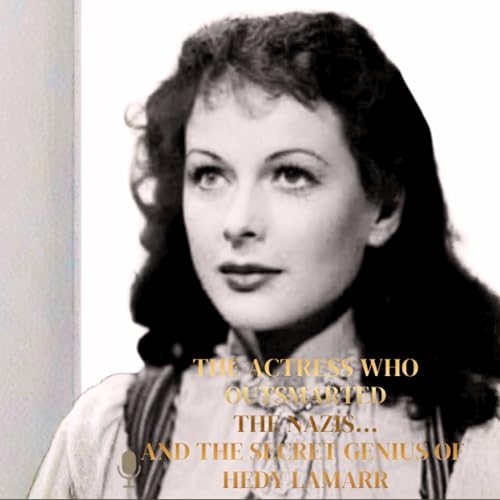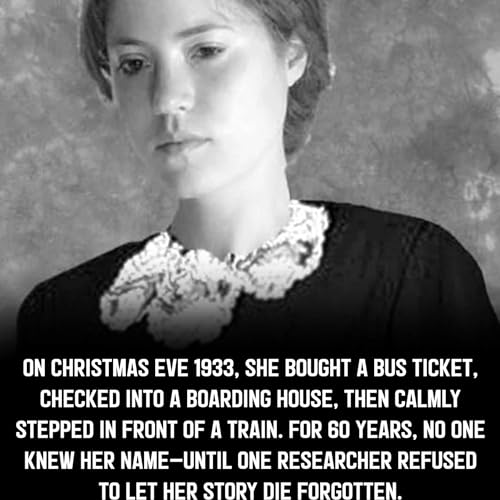Some women are remembered for who they were.
Others for what they endured.
But a rare few — the extraordinary few — are remembered for what they did when everyone else looked away.
This episode tells the haunting, breathtaking story of Lila Hart, the woman the town tried to erase with whispers and nicknames. “The girl from Lantern Street.” “That woman.” “The red-door woman.” Labels meant to reduce her. Contain her. Keep her in the shadows where they believed she belonged.
But they had no idea who they were dealing with.
Born in eighteen seventy-four and orphaned before she was even grown, Lila Hart entered adulthood with nothing but her wits and a fierce will to survive. She did what impoverished girls in mining towns often had to do: she took work behind a red door, not because she wanted to, but because hunger was a harsher master than shame. The world judged her for surviving, never noticing the brilliance behind her quiet eyes.
Then came the winter that nearly destroyed the entire camp.
A fever swept through the mining community like death on the wind. Children collapsed in their mothers’ arms. Families froze in their beds because no one had the strength to chop wood. And with the doctor trapped miles away by snow, the town braced for mass graves.
But Lila recognized the illness instantly. She remembered the herbs. The cooling methods. The small, sacred acts of care that had once failed to save her own mother — but could save someone else’s.
So she carried her basket through the storm and knocked on doors that slammed in her face. People cursed her, judged her, pretended they didn’t need the hands they would soon be begging for. But when a child is dying, pride cracks. Fear swallows judgment whole.
Night after night, Lila moved like a ghost through the sickened streets — cooling foreheads, mixing poultices, feeding the too-weak, burying the lost when no one else had the courage to stand in the cold beside them. By spring, dozens of families were alive because of her.
And when the danger passed?
The whispers returned.
The shame.
The distance.
The hypocrisy of selective gratitude.
Lila didn’t argue. She simply kept moving, kept working, kept surviving — until the day the mine exploded.
That disaster changed everything.
Men were trapped beneath burning beams. Families screamed from the entrance. Smoke turned daylight black. And in the chaos, a single figure ran toward the flames: a soot-covered woman tearing off her sleeves for tourniquets, dragging bodies out with raw hands, refusing to stop even when she could barely breathe.
A journalist covering the catastrophe finally asked the question nobody in town had bothered to:
“Miss, are you a nurse?”
Lila paused — stunned that someone wanted to see her rather than judge her.
“No,” she rasped, smoke burning her lungs. “I’m just someone who doesn’t look away.”
That quote traveled the country.
And for the first time in her life, people knew her real name.
A nursing foundation offered her full tuition. Charitable organizations wrote to her. Women across America called her a hero. Lila left Lantern Street behind and stepped into a life she’d never believed she deserved.
She became one of the first licensed nurses in her state.
She spent forty years in children’s wards and free clinics — serving the poor, the forgotten, the invisible, the way no one had ever served her.
When Lila Hart died in nineteen thirty-one, newspapers called her a pioneer. And the very town that once avoided her shadow carved her full story into stone, the slurs long forgotten, the shame long irrelevant.
People don’t remember the men who crossed the street.
They remember the woman who crossed boundaries.
The woman who saved the sick.
The woman who ran into fire.
The woman who refused to look away.
Today, we finally speak her name —
Lila Hart.
The red-door woman who became a legend.
 10 mins
10 mins 11 mins
11 mins 4 mins
4 mins Nov 20 20255 mins
Nov 20 20255 mins 9 mins
9 mins Nov 18 20259 mins
Nov 18 20259 mins Nov 18 20254 mins
Nov 18 20254 mins Nov 18 20255 mins
Nov 18 20255 mins

